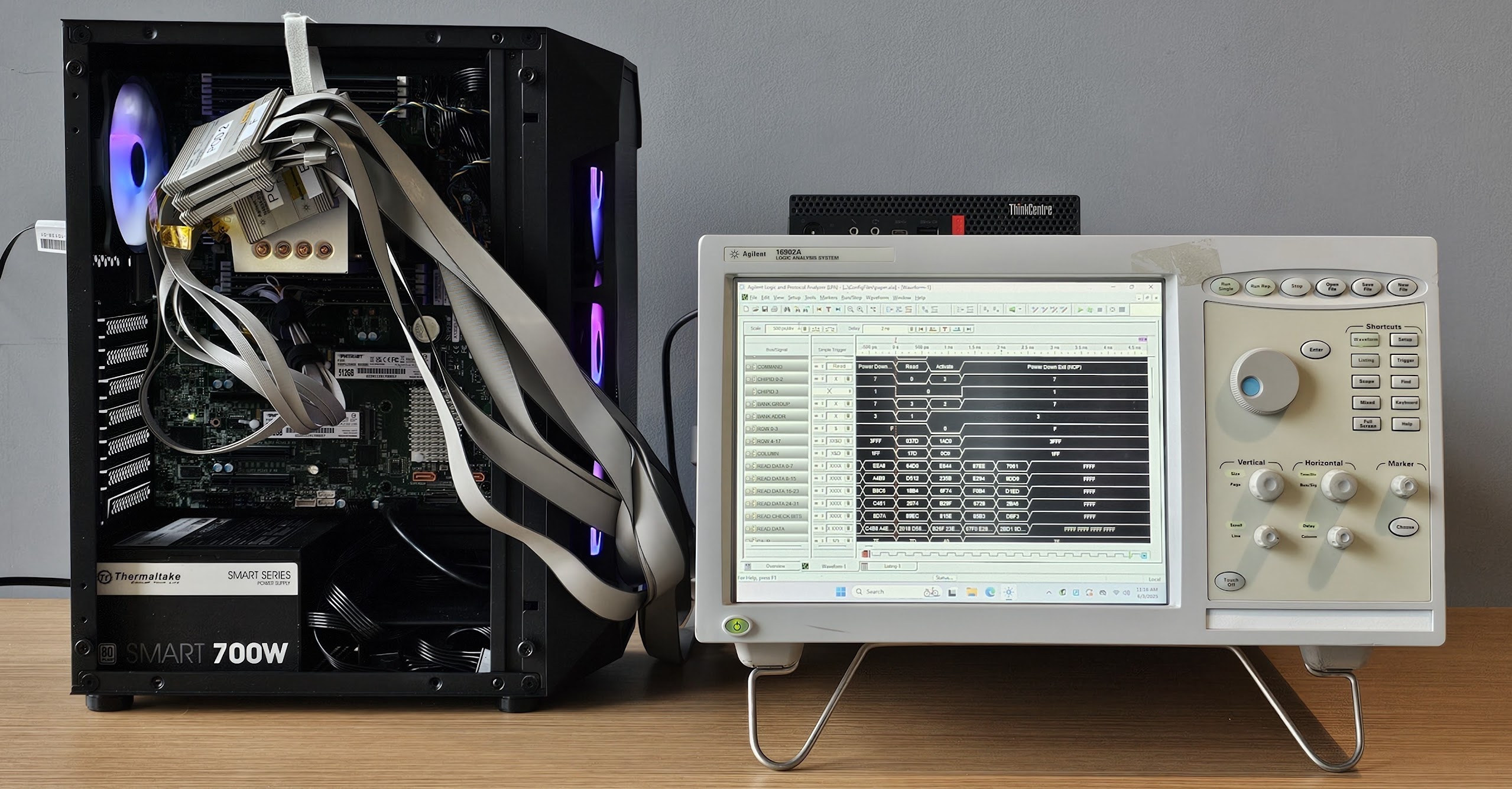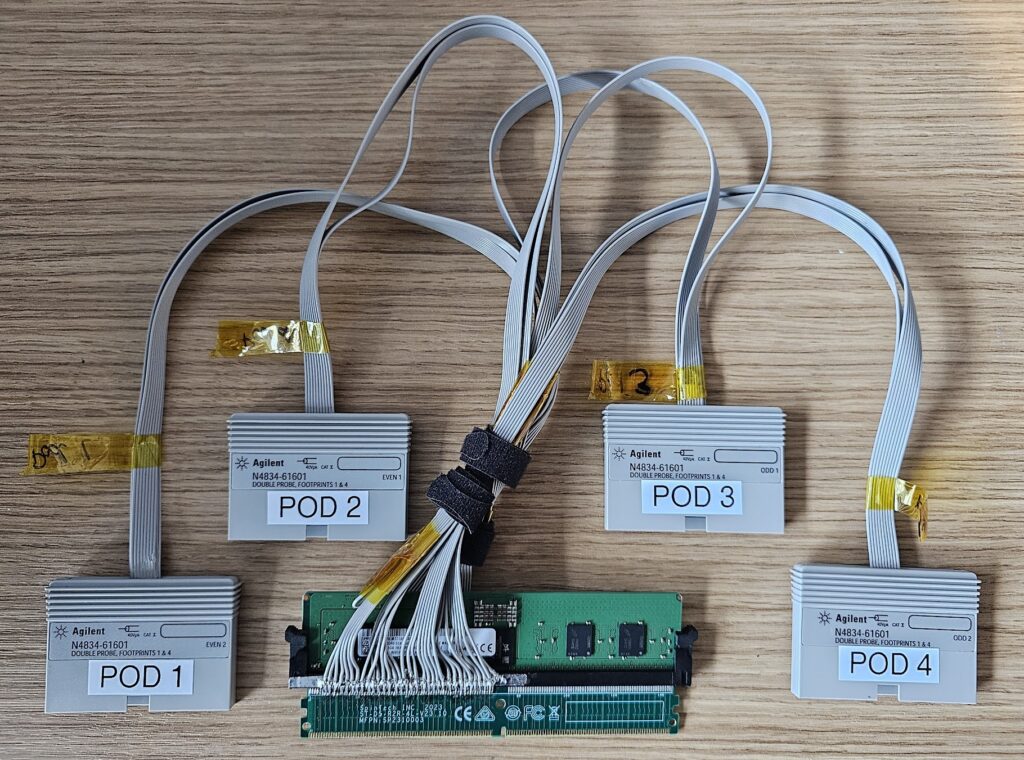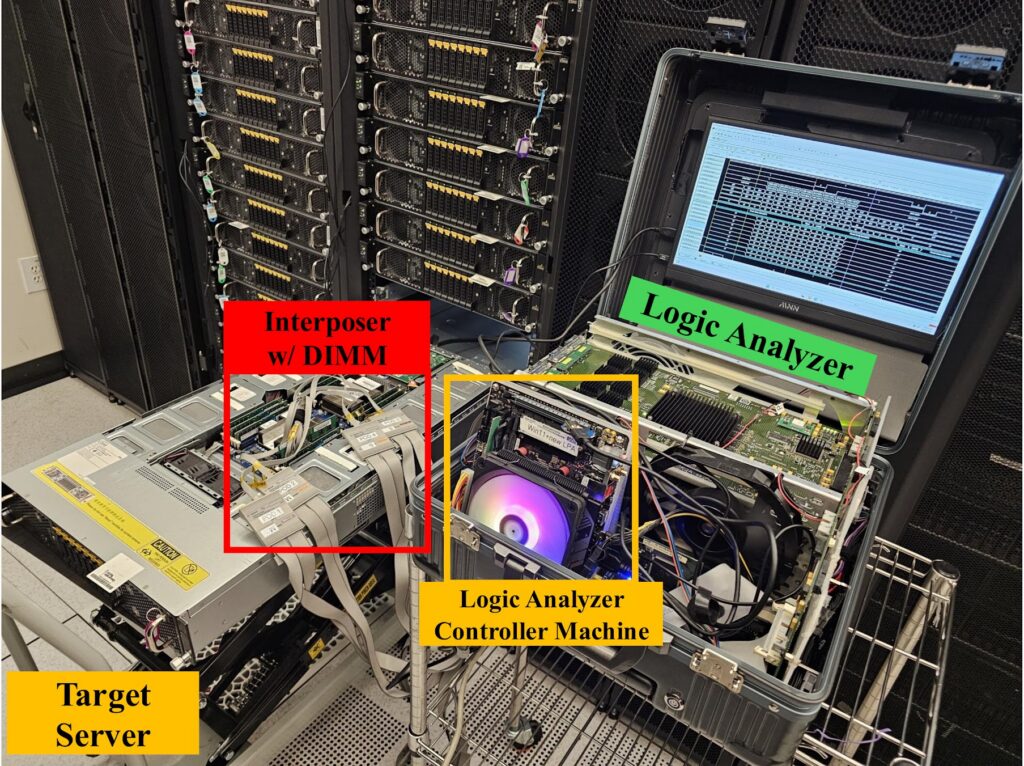Cheap, quick, and the size of a briefcase
“Now that we have interpositioned DDR5 traffic, our work shows that even the most modern of TEEs across all vendors with available hardware is vulnerable to cheap physical attacks,” Genkin said.
The equipment required by TEE.fail runs off-the-shelf gear that costs less than $1,000. One of the devices the researchers built fits into a 17-inch briefcase, so it can be smuggled into a facility housing a TEE-protected server. Once the physical attack is performed, the device does not need to be connected again. Attackers breaking TEEs on servers they operate have no need for stealth, allowing them to use a larger device, which the researchers also built.
Gear that plugs into the DIMNM.
An overview of the equipment involved.
The researchers demonstrated attacks against an array of services that rely on the chipmakers’ TEE protections. (For ethical reasons, the attacks were carried out against infrastructure that was identical to but separate from the targets’ networks.) Some of the attacks included BuilderNet, dstack, and Secret Network.
BuilderNet is a network of Ethereum block builders that uses TDX to prevent parties from snooping on others’ data and to ensure fairness and that proof currency is redistributed honestly. The network builds blocks valued at millions of dollars each month.
“We demonstrated that a malicious operator with an attestation key could join BuilderNet and obtain configuration secrets, including the ability to decrypt confidential orderflow and access the Ethereum wallet for paying validators,” the TEE.fail website explained. “Additionally, a malicious operator could build arbitrary blocks or frontrun (i.e., construct a new transaction with higher fees to ensure theirs is executed first) the confidential transactions for profit while still providing deniability.”
To date, the researchers said, BuilderNet hasn’t provided mitigations. Attempts to reach BuilderNet officials were unsuccessful.
dstack is a tool for building confidential applications that run on top of virtual machines protected by Nvidia Confidential Compute. The researchers used TEE.fail to forge attestations certifying that a workload was performed by the TDX using the Nvidia protection. It also used the “borrowed” attestations to fake ownership of GPUs that a relying party trusts.



